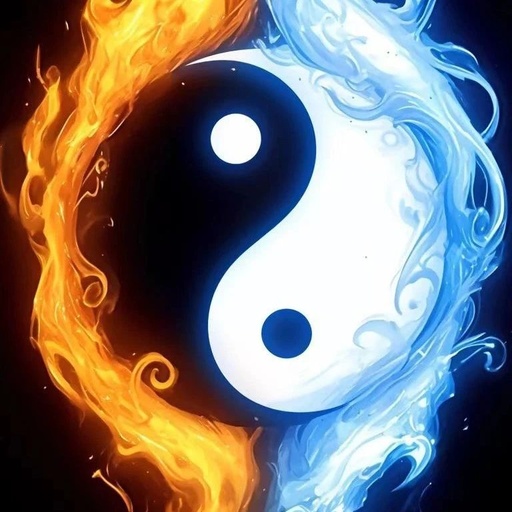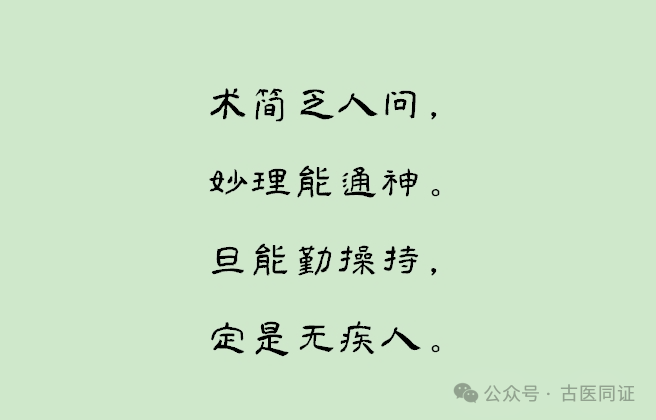 One-dimensional line, two-dimensional plane, three-dimensional body, four-dimensional movement.
One-dimensional line, two-dimensional plane, three-dimensional body, four-dimensional movement.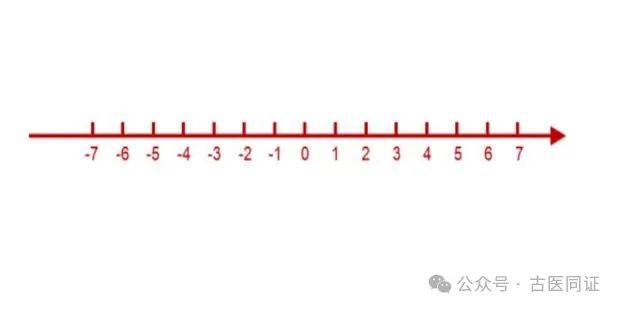
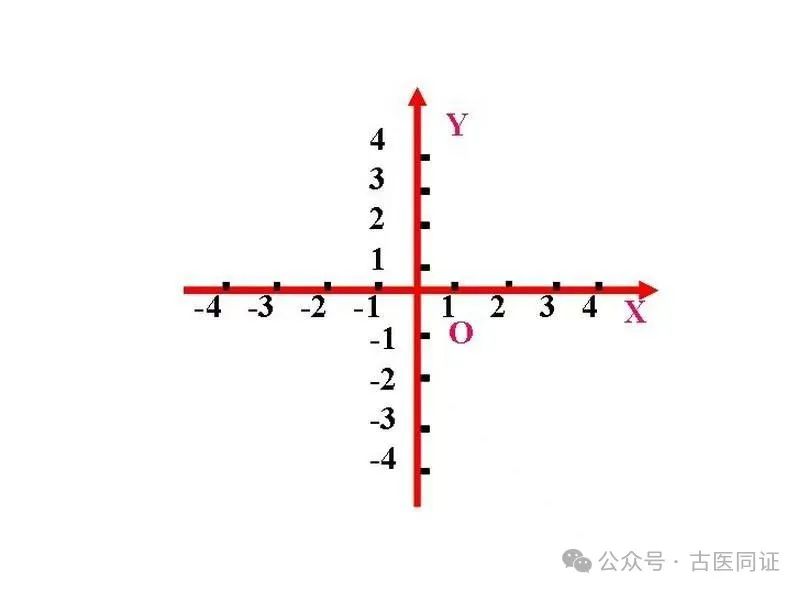
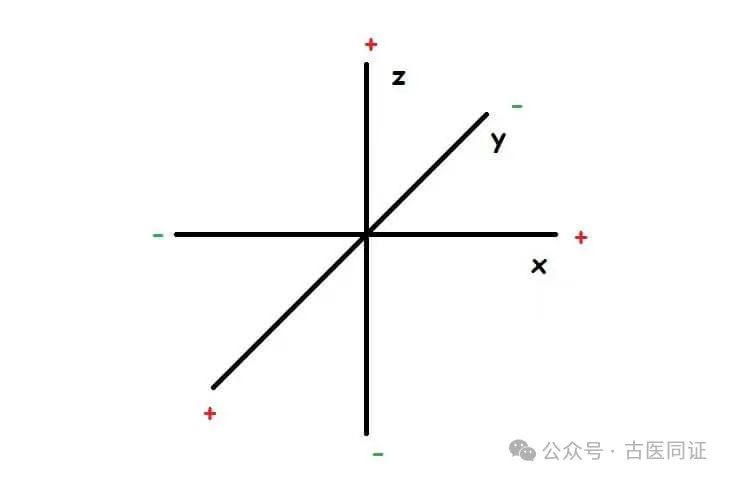
 Four-dimensional movement cannot be illustrated.Cold and heat, assuming a one-dimensional line, have two directions: positive and negative, just like the human body at 37 degrees Celsius as the origin, slightly higher or lower! This is how we view the human body in terms of cold and heat on a one-dimensional scale.Adding another dimension called xū shí (虚实, vacuity and repletion), we transition from elementary to middle school mathematics, learning about the Cartesian coordinate system, where two parameters exist: the X-axis represents the cold-heat axis, and the Y-axis represents the xū shí (虚实, vacuity and repletion) axis.What is xū shí? It refers to density; a cotton ball is xū (虚, vacuous), while an iron block is shí (实, solid). If a cotton ball is compressed under high pressure, it can become denser than iron, thus becoming shí (实, solid).However, hán rè (寒热, cold and heat) is the cause, while xū shí (虚实, vacuity and repletion) is the result. In terms of disease, the density of the pathological point is the result, while the changes in cold and heat cause the pathological point. Temperature changes affect density; changes in cold and heat will alter xū shí (虚实, vacuity and repletion).Once, my six-month-old daughter had a fever at night. I noticed she was tossing and turning, unable to sleep well. When I touched her head, it was very hot, but her feet were cold. I took a hairdryer, wrapped her feet in a towel, and started blowing warm air on them. In less than ten minutes, her feet became warm, and her head was no longer as hot. She then fell asleep peacefully.This demonstrates that by warming the feet, the muscles and skin expand, allowing the warm blood from above to flow down, thus changing the cold and heat, which in turn alters xū shí (虚实, vacuity and repletion), promoting the circulation of qì (气, vital energy) and xuè (血, blood) within the body!Of course, not all colds and fevers can be treated this way; it requires a dialectical approach based on the situation. For instance, if constipation is the cause, it is necessary to expel it promptly.Hán rè (寒热, cold and heat) and xū shí (虚实, vacuity and repletion) are two fundamental principles.If you can feel the cold and heat, soft and hard conditions of the body, you can change the shape of the skin, muscles, and fascia, thereby altering the circulatory state.
Four-dimensional movement cannot be illustrated.Cold and heat, assuming a one-dimensional line, have two directions: positive and negative, just like the human body at 37 degrees Celsius as the origin, slightly higher or lower! This is how we view the human body in terms of cold and heat on a one-dimensional scale.Adding another dimension called xū shí (虚实, vacuity and repletion), we transition from elementary to middle school mathematics, learning about the Cartesian coordinate system, where two parameters exist: the X-axis represents the cold-heat axis, and the Y-axis represents the xū shí (虚实, vacuity and repletion) axis.What is xū shí? It refers to density; a cotton ball is xū (虚, vacuous), while an iron block is shí (实, solid). If a cotton ball is compressed under high pressure, it can become denser than iron, thus becoming shí (实, solid).However, hán rè (寒热, cold and heat) is the cause, while xū shí (虚实, vacuity and repletion) is the result. In terms of disease, the density of the pathological point is the result, while the changes in cold and heat cause the pathological point. Temperature changes affect density; changes in cold and heat will alter xū shí (虚实, vacuity and repletion).Once, my six-month-old daughter had a fever at night. I noticed she was tossing and turning, unable to sleep well. When I touched her head, it was very hot, but her feet were cold. I took a hairdryer, wrapped her feet in a towel, and started blowing warm air on them. In less than ten minutes, her feet became warm, and her head was no longer as hot. She then fell asleep peacefully.This demonstrates that by warming the feet, the muscles and skin expand, allowing the warm blood from above to flow down, thus changing the cold and heat, which in turn alters xū shí (虚实, vacuity and repletion), promoting the circulation of qì (气, vital energy) and xuè (血, blood) within the body!Of course, not all colds and fevers can be treated this way; it requires a dialectical approach based on the situation. For instance, if constipation is the cause, it is necessary to expel it promptly.Hán rè (寒热, cold and heat) and xū shí (虚实, vacuity and repletion) are two fundamental principles.If you can feel the cold and heat, soft and hard conditions of the body, you can change the shape of the skin, muscles, and fascia, thereby altering the circulatory state.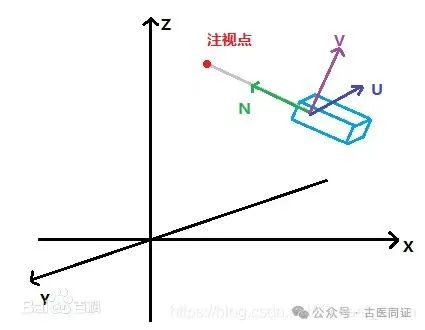 In university mathematics, one encounters three-dimensional coordinate systems.This introduces the concept of biǎo lǐ (表里, exterior and interior), referring to space; three-dimensional space, where the exterior is the surface and the interior is the inside, indicating position and space.The Shāng Hán Lùn (伤寒论, Treatise on Cold Damage) further subdivides the exterior and interior into three levels: exterior, interior, and half-exterior half-interior, and then divides these three levels into two, distinguishing between inside and outside, with the inside being yīn (阴, yin) and the outside being yáng (阳, yang), resulting in six levels known as the liù jīng (六经, six channels).At a certain level, the changes in cold, heat, vacuity, and repletion are collectively referred to as the liù bìng (六病, six diseases). In the Shāng Hán Lùn (伤寒论, Treatise on Cold Damage), the concept of disease refers to the collective symptoms of cold, heat, vacuity, and repletion experienced at the same level.Thus, in the eight principles of dialectical diagnosis, biǎo lǐ (表里, exterior and interior) refers to the spatial position.Chinese people have a habit of speaking about where something is happening and how to resolve it.Where in the body is it? Is it interior, exterior, or half-exterior half-interior?What has happened? Is it cold, hot, vacuous, or replete? What should be done? The classical prescriptions for cold damage, based on past experiences.In advanced university mathematics, one encounters the concept of four-dimensional spacetime, which introduces the dimension of time, allowing three-dimensional objects to move, thus creating time.This corresponds to the concept of yīn yáng (阴阳, yin and yang), which originally referred to day and night, the changes of time. In terms of the human body, it refers to the functions and structures; three-dimensional structures are all about structure, while humans have functions. The jīn yè (津液, body fluids), qì (气, vital energy), and xuè (血, blood) within the body need to circulate and flow, leading to the concept of yīn yáng (阴阳, yin and yang), where jīn yè (津液, body fluids), qì (气, vital energy), and xuè (血, blood) are yīn (阴, yin), and movement represents yáng (阳, yang). Yáng (阳) refers to the state of material movement, while yīn (阴) refers to the material itself; yīn (阴) is the body, and yáng (阳) is the function; yīn yáng (阴阳) represents the relationship between body and function.Yīn (阴) represents the substance, while yáng (阳) represents the function; yīn (阴) is the human body, while yáng (阳) is the spirit.The spirit is the subject, while the human body is the object; the function of the spirit resides within the human body, the object; when the subject and object are in conflict, illness arises.
In university mathematics, one encounters three-dimensional coordinate systems.This introduces the concept of biǎo lǐ (表里, exterior and interior), referring to space; three-dimensional space, where the exterior is the surface and the interior is the inside, indicating position and space.The Shāng Hán Lùn (伤寒论, Treatise on Cold Damage) further subdivides the exterior and interior into three levels: exterior, interior, and half-exterior half-interior, and then divides these three levels into two, distinguishing between inside and outside, with the inside being yīn (阴, yin) and the outside being yáng (阳, yang), resulting in six levels known as the liù jīng (六经, six channels).At a certain level, the changes in cold, heat, vacuity, and repletion are collectively referred to as the liù bìng (六病, six diseases). In the Shāng Hán Lùn (伤寒论, Treatise on Cold Damage), the concept of disease refers to the collective symptoms of cold, heat, vacuity, and repletion experienced at the same level.Thus, in the eight principles of dialectical diagnosis, biǎo lǐ (表里, exterior and interior) refers to the spatial position.Chinese people have a habit of speaking about where something is happening and how to resolve it.Where in the body is it? Is it interior, exterior, or half-exterior half-interior?What has happened? Is it cold, hot, vacuous, or replete? What should be done? The classical prescriptions for cold damage, based on past experiences.In advanced university mathematics, one encounters the concept of four-dimensional spacetime, which introduces the dimension of time, allowing three-dimensional objects to move, thus creating time.This corresponds to the concept of yīn yáng (阴阳, yin and yang), which originally referred to day and night, the changes of time. In terms of the human body, it refers to the functions and structures; three-dimensional structures are all about structure, while humans have functions. The jīn yè (津液, body fluids), qì (气, vital energy), and xuè (血, blood) within the body need to circulate and flow, leading to the concept of yīn yáng (阴阳, yin and yang), where jīn yè (津液, body fluids), qì (气, vital energy), and xuè (血, blood) are yīn (阴, yin), and movement represents yáng (阳, yang). Yáng (阳) refers to the state of material movement, while yīn (阴) refers to the material itself; yīn (阴) is the body, and yáng (阳) is the function; yīn yáng (阴阳) represents the relationship between body and function.Yīn (阴) represents the substance, while yáng (阳) represents the function; yīn (阴) is the human body, while yáng (阳) is the spirit.The spirit is the subject, while the human body is the object; the function of the spirit resides within the human body, the object; when the subject and object are in conflict, illness arises.
